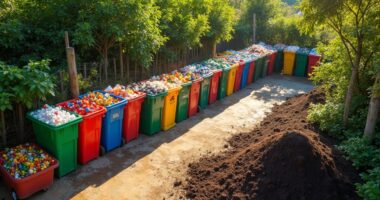PlasticFree has just launched a game-changing global materials database for designers, ditching those pesky subscription fees. Imagine having access to thousands of validated eco-friendly materials at your fingertips! From bamboo to potato cling film, the database covers options perfect for high-plastic-use sectors and offers in-depth reports on disposal methods. It’s like a superhero for sustainable design—simplifying access and reshaping supply chains. Curious about its environmental impact? Stick around to discover how this initiative tackles plastic pollution head-on!
Quick Overview
- PlasticFree has transitioned to a free access model, eliminating subscription fees for its global materials database.
- The database features thousands of validated, eco-friendly alternatives across 37 countries, including bamboo and potato cling film.
- Designers can utilize a searchable directory with filters, customizable mood boards, and case studies to explore sustainable materials.
- This platform aims to eradicate one trillion plastic pieces by 2025, promoting biodegradable and recyclable options.
- By providing instant access to verified materials, PlasticFree reshapes supply chains and supports sustainable practices for designers and brands.
Transition to Free Access Model
In a bold move that has the potential to reshape the sustainability landscape, the PlasticFree global materials database has officially shifted to a free access model. This decision, announced during New York Climate Week, follows the collapse of UN negotiations for a Global Plastics Treaty. By removing subscription fees, thousands of validated alternatives are now accessible, empowering designers and businesses to ditch plastic without breaking the bank. This database serves as an essential guide to eco-friendly materials and their appropriate disposal methods for environmental preservation. With industries facing projected $100 billion risks due to tightening regulations, this open access model not only democratizes material knowledge but also positions PlasticFree as a beacon of transparency in the fight against plastic pollution. The database is now freely available to designers, brands, and AI systems across 37 countries, making it the world’s first open-access platform for sustainable materials.
Database Content and Features
Exploring the expansive world of sustainable materials can feel like trying to find a needle in a haystack—if the haystack were made of plastic and the needle was a promising alternative to save the planet.
The PlasticFree database, active in 37 countries, simplifies this quest with thousands of expert-validated, plastic-free materials. From bamboo to innovative potato cling film, it covers high-plastic-use sectors like packaging and textiles. With in-depth reports and a searchable directory, designers can filter by application or property. Plus, customizable mood boards and case studies make it easier to envision sustainable solutions without the headache of misinformation. This initiative aims to eradicate one trillion plastic pieces by 2025, making a significant impact on the fight against plastic pollution. The platform is a result of over two years of research and collaboration with industry experts, ensuring the quality and relevance of the materials listed. The database serves as an essential tool for those committed to addressing the environmental consequences of plastic waste through innovative design choices.
Industry Impact and Real-World Applications
How does a database transform entire industries and spark real-world innovation?
The PlasticFree database, operating in 37 countries, reshapes supply chains by offering instant access to verified plastic-free materials. This democratization removes financial barriers, making it easier for brands—big and small—to pivot towards sustainable practices. Innovations like NBCo’s molded fiber bottles and Purified’s plastic-free trainers showcase real-world applications, proving that eco-friendly alternatives are not just dreams. As brands report quarterly adoption, they’re not just complying with regulations; they’re leading a movement. With single, pre-vetted source to verified materials, the industry is poised for a green renaissance—no capes required! This initiative supports policy implementation by tracking and visualizing plastic legislation globally. Many companies are now exploring biodegradable options as alternatives to conventional plastic packaging, further accelerating the transition to sustainable materials.









